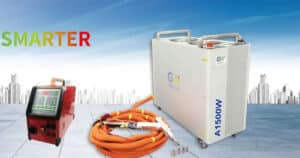Laser cutting is a non-contact type, which combines focused heat and heat energy based on the thermal manufacturing process to apply pressure to melt and spray the material at the narrow path or cut.
Compared with traditional cutting methods, laser cutting has many advantages. The laser provides highly focused energy and CNC control, which can accurately cut materials from different thicknesses and complex shapes.
Laser cutting can realize high precision and small tolerance manufacturing, reduce material waste, and process material diversity.
Precision laser cutting technology can be widely used in a variety of manufacturing applications, it has become a valuable asset of the automotive industry, using a variety of materials to produce complex, thick parts, from hydroforming 3D shapes to airbags.
The precision electronics industry uses parts, housings, and circuit boards to finish machining metal or plastic.
From processing workshops to small workshops to large industrial facilities, they offer manufacturers many advantages; here are five advantages of laser cutting:
Excellent Precision
The precision and edge quality of the material cut by laser is better than those of the product cut by the traditional method. Laser cutting uses a highly focused beam as a heat-affected zone in the cutting process, which will not cause large areas of thermal damage to the adjacent surface.
In addition, the cutting process of high-pressure gas (usually CO2) is used to spray molten material to remove the slit of the narrower workpiece, making the processing cleaner and making the complex shape and design edge smoother.
The laser cutting machine functions as a computer numerical control (CNC). A pre-designed machine program can automatically control the laser cutting process.
The laser cutting machine controlled by CNC reduces the risk of operator errors and produces parts with more accurate, and stricter tolerances.
Improve Safety In Workshop
Accidents involving employees and equipment in the workplace negatively impact a company’s productivity and operating costs.
Material processing and handling operations include cutting areas where accidents occur frequently.
Using lasers to cut these applications can reduce the risk of accidents.
It is a non-contact process, which means that the machine tool does not physically contact the material.
In addition, the beam is generated in the laser cutting process without the intervention of any operator so that the high-power beam can be safely kept inside the sealing machine.
In general, laser cutting does not require human intervention except for inspection and maintenance operations. Compared with traditional cutting methods, this process minimizes direct contact with the workpiece surface, thus reducing the possibility of employee accidents and injuries.
Strong Versatility Of Materials
In addition to cutting complex geometric shapes with higher precision, laser cutting also enables manufacturers to cut without mechanical changes, allowing the use of more materials and a wider range of thickness.
Using the same beam with different output levels, intensities, and durations, laser cutting can cut a variety of metals, similar adjustments to the machine can accurately cut materials of all thicknesses, and integrated CNC components can be automated to provide more intuitive operations.
Faster Delivery Time
The time it takes to set up and operate the manufacturing equipment will increase the overall production cost of each workpiece, and the laser cutting method can reduce the total delivery time and the total cost of production.
For laser cutting, there is no need for mold replacement and setting between the material or material thickness.
Compared with the traditional cutting method, laser cutting’s setting time will be greatly reduced, and it involves more machine programming than loading materials.
In addition, the same cutting with a laser can be 30 times faster than traditional sawing.
Lower Cost Of Materials
By using the laser cutting method, the manufacturer can minimize material waste. The beam used in the focused laser cutting process will produce narrower notches, thus reducing the size of the heat-affected zone and the number of materials that are thermally damaged and unusable.
When flexible materials are used, the deformation caused by mechanical machines also increases the number of unavailable materials.
The non-contact nature of laser cutting eliminates this problem. The laser cutting process can cut with higher precision and stricter tolerances and reduce material damage in the heat-affected zone.
This allows the part design to be placed more closely on the material, which reduces material waste and reduces material costs over time.
The semiconductor industry uses laser cutting in the electronics industry, adding cuttable silicon, gemstones, and complex parts for the production of composite materials. Laser cutting has a wide range of applications in the medical industry, including medical production equipment and equipment, cutting precision tubes, and surgical applications that require aseptic and precision cutting.
The resulting smaller heat-affected zones reduce the amount of material waste, thereby reducing overall costs, and the non-contact nature reduces the risk of workplace injuries and accidents.
The laser cutting process’s programming and conversion time is faster, achieving greater production versatility while minimizing delivery time.







